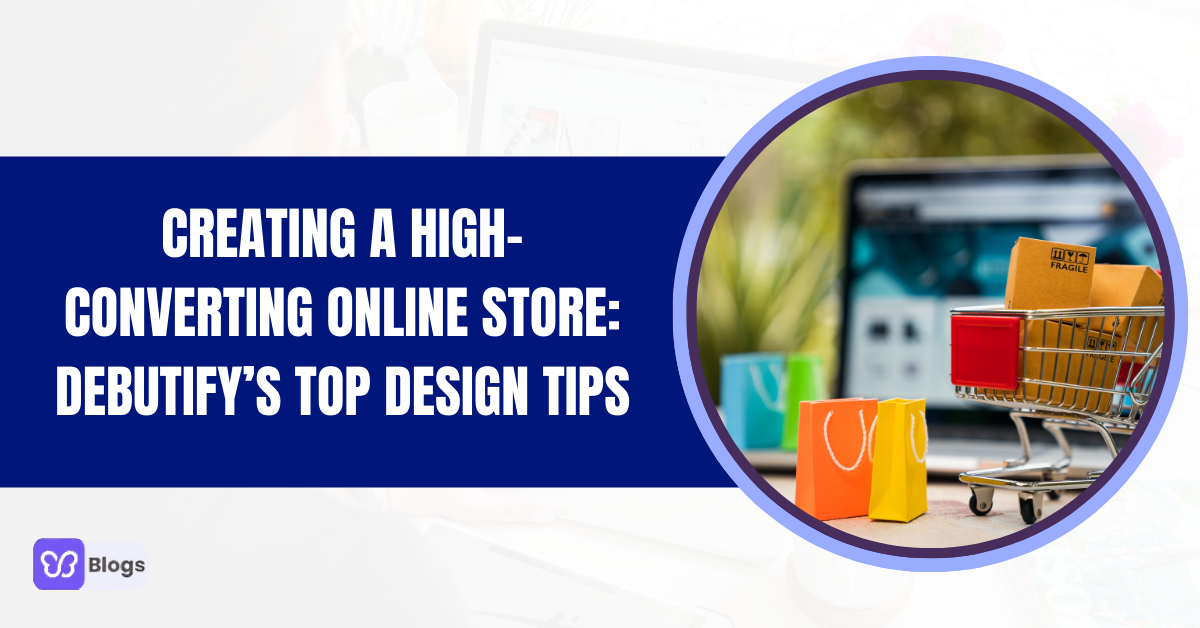Let's suppose you sell a product online (anti-wrinkle cream or serum, for example) that targets middle-aged women. You create a sales funnel that is generic and includes every woman regardless of her age and interests. What results can you expect with such an approach?
For most people, your marketing efforts will sound spammy. Also, you’ll end up throwing money at people who are least interested in your product range.
There is no such thing as one-size-fits-all when we talk about ecommerce marketing. Why? Because the people who visit your website differ by age, income, buying preferences, gender, and more.
If you want to personalize and save on your marketing efforts, then e-marketing segmentation can be your safest bid.
If you have not heard of this term earlier, we will explain this crucial yet often neglected ecommerce marketing aspect in detail below. After reading this post, we are sure you can create better marketing funnels that are more targeted and productive.
What Is E-Marketing Segmentation?
Simply put, marketing segmentation for online shopping is the process of evaluating and categorizing different customer groups to enable marketers and sellers to have targeted marketing efforts.
Whether you run a small store online or have an e-business with millions of customers, you have to segment markets to understand the needs of your target audience and offer the best possible solutions.
Unlike in the past, when mass marketing was a much more common practice, today’s marketing choices are more personalized.
Businesses leveraging mass marketing earlier had no other choice except to offer the same marketing mix to everyone.
The present-day marketplace is segmented by plenty of choices, allowing customers to choose from different brands that cater to their individual buying preferences and tastes. Since businesses can benefit from ecommerce data analytics to identify trends, they tend to reach their buyers on a more personal level.
How Does E-Marketing Segmentation Benefit Your Ecommerce Business?
As mentioned above, with e-marketing segmentation, you can categorize your buyers into multiple segments.
Here are some of the many benefits you get when you implement market segmentation to optimize your ecommerce marketing efforts.
Develops Brand Identity
By implementing the best e-marketing segmentation practices, you can make your buyers well aware of your business and products. Identifying your business will help your customers to directly engage with your offers.
This will improve your goodwill and establish a brand identity that you can use to have a loyal customer base.
Better Price Optimization
Price optimization is the key to an ecommerce marketing strategy. Trying to understand the financial status of your target audience will help you optimize prices.
When you optimize prices according to the spending power of your customers, they willingly invest in your products and services.
Improves Competitiveness
As discussed above, e-marketing segmentation leads to better customer retention. Happy customers mean more revenue for your business. And that goes without saying that more profit improves your market competitiveness.
In a nutshell, when you segment up your market, you gain popularity amongst your target audience.
Customer Retention
Customers admire businesses that offer personalized solutions according to their buying preferences and individual needs. As a result, they like to purchase products from your store instead of your competitors.
Many studies prove that businesses that implement customer retention strategies tend to build a loyal customer base compared to businesses that throw their entire marketing budget into acquiring new customers.
Read more on our guide "How To Grow Your Ecommerce Business Through Customer Retention" to know how customer retention strategies can help you to grow your ecommerce business.
Improves Business-Client Relationships
Customers prefer to stick to brands that understand their needs. Better e-marketing segmentation allows businesses to make targeted marketing efforts. When you’re able to deliver what your customers expect from your business, you earn more points for better customer service and engagement.
Improves Channel Of Distribution
Another perk of using market segmentation for your ecommerce business is it improves your channel of distribution. How?
By identifying the right number of customers, you can choose the right channel of distribution.
It also helps your marketing team become aware of what, when, how, and to whom they should deliver products.
Helps You Gain Economies Of Scale
E-marketing segmentation enables businesses to allocate and utilize their resources effectively. As a result, they achieve their desired goal at the least possible cost.
Now that you know why e-marketing segmentation is crucial for your business, it’s time to explore some of the ways you can segment a target market for your business.
How To Segment A Target Market?
Businesses conduct market segmentation based on:
Geographic Segmentation
Geographic market segmentation revolves around categorizing customers based on country, state, region, etc.
Psychographic Segmentation
Another factor that significantly influences people’s buying decisions is their values and beliefs. Things such as income, lifestyle, and religious sentiments, impact the purchase decisions of the buyers. Businesses, therefore, should keep these factors in mind while creating their market segmentation strategies.
Behavioral Segmentation
Every customer is different. Some prefer buying stuff from physical stores so that they can touch the products, while others prefer online shopping.
Some buyers do impulsive shopping, while others need time to make their buying decisions. Knowing how your marketing efforts will match your target audience’s needs will help you make your marketing efforts more targeted and result-driven.
Demographic
Age, income, gender, and lifestyle also play a role in how people behave like customers. So one should also keep these factors in mind before they devise a market segmentation strategy for their online business.
Seven Must-Have Segments To Optimize Your Ecommerce Marketing
1. First-Time Visitors
First-time visitors are people who are visiting your store for the first time. Unlike your repeat buyers, these individuals are not familiar with your brand. The way you market your products in front of your first-time visitors should be different than how you deal with your loyal customers.
In addition to displaying a welcome note, you can also showcase notifications that could take them to your return and refund and privacy policies.
2. VIP Buyers
Knowing who your repeat buyers are essential for your business. With this data at hand, you can send targeted and personalized emails with value-added offers and discounts.
You can also offer incentives if they’re willing to do some real-time referral marketing for your brand.
Here, it is critical to understand that loyalty isn’t confined to buyers who are spending a lot on your products. It is a combination of spend and loyalty. So target those customers as well who visit your website often, even if they don’t spend exorbitantly on your offers.
3. Device Types
Another way an ecommerce business can segment its market is based on devices. Mobile visitors account for 1/4th of total web traffic. Similarly, many desktop and tablet users make purchases using their devices.
What you can do as an online seller is to target each category separately. The process begins by choosing a website theme like Debutify that is mobile-responsive and looks identical on all devices.
The checkout process should be simple enough as well so that mobile and tablet users can purchase without having to fill in multiple forms or visit different pages.
4. Buyers Who Have Purchased At least Once In The Past
It’s also critical to identify buyers who have purchased at least once from your site in the past. Why? Because you won’t certainly want to reintroduce your brand to someone who has already experienced your services before.
Also, it would help you display messages that persuade them to purchase more from your website. Instead of repeating your welcome messages, you can show those customers the products that complement their past purchases.
For example, if a customer has purchased any diet food in the past, you can show products of similar nature to attract sales. In addition to that, you can also offer a little discount or a cashback offer to help those one-timers convert and become your loyal customers.
5. Returning Website Visitors Who Haven’t Purchased Anything In The Past
Returning website visitors who haven’t bought anything from your website in the past are another prominent segment that needs your attention.
These visitors are already familiar with your product range and showing interest in your offers. It’s your chance to turn them into your loyal customers.
For this, you have to figure out what’s causing them not to shop from your store. Carefully examine analytics and live chat conversations these customers have had with your support team in the past.
Maybe they’re having doubts about your pricing or quality. It could also be a possibility that they’re showing reluctance due to your rigid shipping policies. Once you have that data in hand, it would be easier for you to retarget those buyers by addressing their pain points.
For instance, you can offer free shipping and a free return and refund offer on their first order with 10% off. How about a gift voucher that they can redeem on their next purchase? The possibilities are endless.
6. Cart Abandoners
Some visitors spend a lot of time on your website, add products to their carts, but leave without completing the checkout process.
How will you target those confused customers? Yes, you can send a follow-up cart abandonment email to remind those customers of their incomplete purchases. But you can also notify them on the spot by displaying a message like ‘Don’t Leave Us Behind’ or ‘Here’s an Extra 10% Off’ to help them convert instantly.
Here's our Cart Abandonment Guide to learn more about this subject.
7. Location & Personalized Data
Another way you can break down your visitors is by segmenting them based on location. Just like brick-and-mortar stores that target local customers, you can also target customers locally according to their individual needs.
Knowing where the major portion of your customers are coming from will help you make smart decisions about how and when you can target them for better results.
In addition to that, you can also segment markets based on personalized data you collect from different sources. For example, you can track the data of your website visitors entering your website and searching for different products. Also, you can take into account the data you have collected through your live chat support team.
Let’s suppose you run a computer hardware and accessories store online. The majority of customers you’re having on your website are millennials aged between 35 and 40.
Their searches are related to gadgets, data storage, and data backup devices. The data you have gathered through your support team indicates that your buyers are interested in a particular brand. Also, they have concerns about the safe and secure delivery of their packages across different states.
This information is enough to create a personalized and targeted marketing strategy that you can use to target first-timers, one-timers, and your loyal customers.



